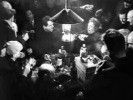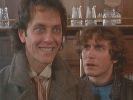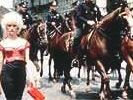
Whisky Galore! has an unquenchable charm
When, in January of this year, the wreck of the Napoli led to barrels of whisky washing up on Devon's Branscombe beach, there was one image in everyone's minds: Whisky Galore! This modest little Ealing comedy about a group of Scottish islanders who conspire to conceal a consignment of shipwrecked liquor remains one of the best-loved films of its day. Sure, it's all about breaking the law, but it appeals to a certain urge in all of us, and there's an unquenchable charm about the islanders' fondness for their drink. This St Patrick's Day many of you will be enjoying a wee tipple, so why not top off the night with a movie whose characters share your enthusiasm?
 |
Drinking games and cinema have always been around, but have enjoyed a surge in popularity since the advent of the internet. Among the most famous is the Star Wars drinking game, which makes use of the film's 'classic' repeated lines and actions as triggers for taking a swig. There are several versions of this, some of which are designed to be played whilst watching all three of the original films in succession. The prequels have never inspired the same devotion, fans protesting that they're somewhat watered down. Of course, there's also a fair bit of drinking depicted in the films, especially on Tatooine, though few of the main characters indulge.
It wasn't always thus. Early cinematic depictions of drinking focus almost entirely on the social problems it can cause - and this is especially true of Hollywood, despite the long and much discussed history of alcohol abuse amongst its stars. In the Forties, films such as The Lost Weekend depicted drunken binges as the very depths of depravity. 1951 gave us the tragic self-destructive alcoholism of Night Into Morning and the glamorous but devastating drink problems of Blanche DuBois and Stanley Kowalski in A Streetcar Named Desire.
 |
During the Sixties and Seventies, the rise of drug culture accompanied a relaxation of attitudes towards drink, which started to appear in the background of many films centred on other subjects, including cult classics like Easy Rider and Valley Of The Dolls. This persisted in British films through the Eighties, especially in those like Sid and Nancy and Prick Up Your Ears which reflected elements of the counterculture, but it faded in Hollywood, where even teen movies took an increasingly negative approach. It would be unusual today to see anything in a kids' movie resembling Dumbo's spectacular dreams after innocently dipping his trunk in a barrel. Depictions of pub culture in films like Trainspotting shocked many American audiences, and Shaun Of The Dead encountered some cross-cultural difficulty in getting across why the natural place to take refuge from zombies is the pub.
 |
What they do do is demonstrate that drink is very much a part of our culture already and that, though they might be accused of promoting it, what most films are doing is simply reflecting it. From Withnail to Begbie to the hapless Shaun, these are all people we can recognise. So raise a glass tonight to the silver screen and all the great stories it has given us to tell down the pub.





















